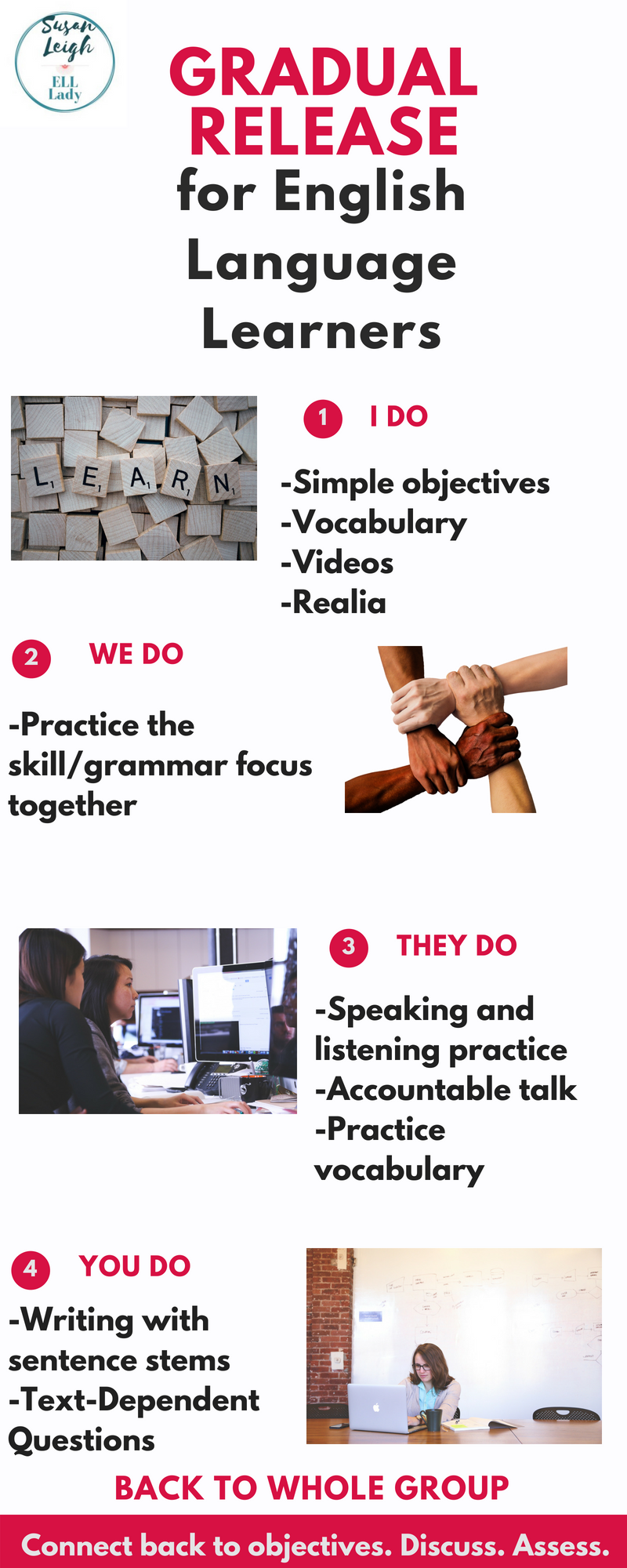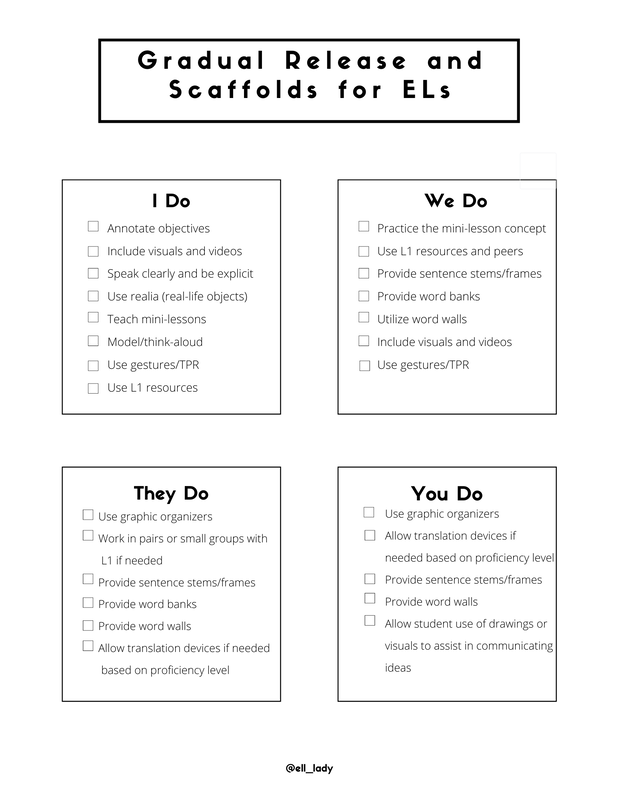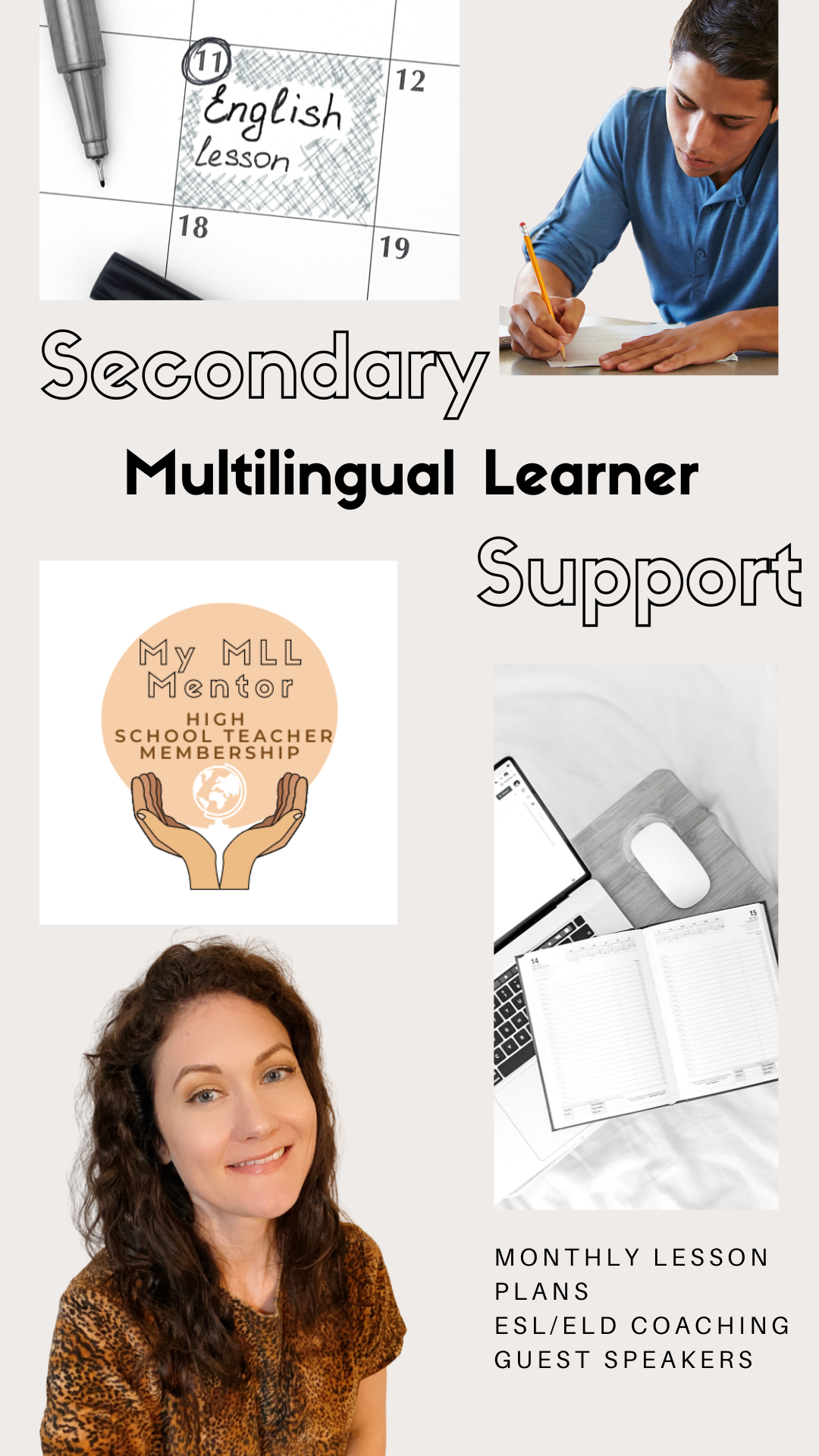|
Using gradual release of responsibility as an outline for my lessons started out as a non-negotiable. It's what our principal looked for during walk-throughs and evaluations, but it really started to grow on me. Looking back now, I don't even remember how I structured my lessons before learning gradual release! Not only is it good teaching for any classroom, but it's great for our English Learners. Teaching ELs means we do a lot of scaffolding. Sometimes we could scaffold all period long depending on the student and the topic. Gradual release slowly releases those scaffolds to let the students fly on their own, or see if they are able to. Sometimes this may take part in only one class period, and other times gradual release may span several days. I Do The "I Do" is where we do our explicit and direct instruction. This is so important for language learners. Think back to your Spanish class you may have taken in college. The instructor always spent a while explaining to you the verb tenses and conjugations (this is what I remember at least). This is where we explain the skills we will be teaching that day. We don't want to lecture most of the class period because depending on your student's proficiency level, they may not understand you most of the time, and their attention will start to dwindle. What do you do instead? Take this time to state your objectives very simply if you have lower level students. You can state the original objective and standard by your state first, just follow up with a simpler version after. For higher levels, put the objectives in student-friendly terms but don’t skip the academic language! After stating the standards and objectives, this is where reviewing or introducing skills happens. Use simple language that brings your point across, and then supplement with pictures, videos, Prezis or power points, realia, and translations if needed. It is a great place for teacher think alouds and also a great time to introduce your vocabulary or grammar for the day. We Do At this point in your lesson, you should be feeling like you've explained as much as you can to the point of not losing their attention. This may be a good time to do a quick check for understanding, then move on to some practice together. This will be with your skill and/or your vocabulary and grammar focus. Continue with a think-aloud to get them started, and then let them show you theirs while practicing. Having them think aloud with you or a partner is a great way to get in some academic discourse. Skills can be worked on together with a SMART board, white board, Recordex, projected iPad with an app like Show Me Interactive Whiteboard, or any other technology that lets you share lessons with your students. Some of us may still be working with a good old chalkboard, and there is nothing wrong with that except for a little chalk dust. As long as you are doing it together. They Do Sometimes it's hard to really know if some of our learners "got it", but if you know for sure that some of them are not getting it, check for understanding again and re-teach as needed. Involve those students a little more in your "we do" before going to the next step. For the you do, make sure to project or write on the whiteboard what you want to be hearing from them while working together. What accountable talk should they be focusing on? Role-play with a student so they understand that this is what working together should look like from the teacher’s point of view. Display the accountable talk they should be practicing and the vocabulary words they should be using as well. It is always stressed that using these words does not have to be perfect- we are still learning these words! This is where most of their speaking and listening practice comes to play. You Do This is where you see if your students are truly getting it and if they can fly alone. They may be answering some text-dependent questions about a text you read, doing some writing with some sentence stems, or doing a listening assessment. Whatever the assignment, it is solo. No copying. No talking. It doesn't have to be for long; it can even be just one or two sentences! But they must show you mastery of your objective for the day. Back to Whole Group Students need some closure to really solidify the lesson for them. Connect what you did for the period back to the objectives. Discuss with them how they think they feel they did. This may not come in the form of words just yet- have them show you how they did with picture cards, a Fist to Five, or another exit ticket idea. Make sure you reinforce the skill or concept through homework, bell work, and by returning back to it often. Just because you taught them the skill or vocabulary today doesn't mean it'll stick yet! And above all, if you feel like that lesson just wasn't effective or your best, or that there were some of your students who still didn't grasp the concept- you can always come back to it or extend your lesson a day. To learn more about strategies for incorporating language into your lessons, check out my course, My EL Mentor: Creating a Language-Rich Classroom! And if you are a high school teacher, consider joining my membership, My MLL Mentor, to discuss ideas like this with other high school ESL teachers!
0 Comments
Leave a Reply. |
AuthorI support middle and high school teachers through monthly lesson plans, coaching, and guest speaker offerings in our Secondary ESL Teacher Membership. Archives
April 2023
Categories
All
|



 RSS Feed
RSS Feed
